

SCS has completed numerous mold surveys for a variety of facilities, such as schools, offices, warehouses, industrial, and commercial buildings. We do not recommend a mold survey if you observe mold — if you can see it, you have a mold issue. Mold is ubiquitous and requires water and food to grow, so if you observe mold growth, the first step is to stop the source of water.
Exposure
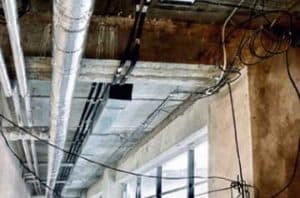
There are no promulgated governmental exposure limits for mold, as every individual responds differently to the presence of mold. Mold surveys are typically performed after the water leak has been repaired, and the water damaged building materials have been replaced. This post-remediation survey lets you know if the cleanup has been successful and the area is safe to occupy.
If tenants are complaining of moldy or musty odors, a survey can tell you if you have a mold problem even if there is no visible growth. Mold can be present inside walls, air ducts, and false ceilings, behind cabinets, beneath flooring, for example. Successful survey results will show lower levels of mold spores inside the building compared to the outside sample results, with low to absent levels of concern.
Survey Process
SCS performs indoor air quality or IAQ, mold surveys using the newest battery-powered Zefon Bio-Pump® Plus, which collects an air sample for mold analysis in as little as 5 to 10 minutes, with an auto-shutoff feature once the sample is collected. Typically, a minimum of six samples are recommended, three inside and three outside, with the total number of samples dependent on the size and complexity of the affected area.
We transport the sample cassettes to a certified laboratory under the chain-of-custody protocol for mold spore analysis, with results typically available within 2 to 5 days. Rush analysis is available for an additional cost (same day service is dependent on the time of sample delivery to laboratory). Laboratory analytical reports may include spore counts for approximately 20 types of mold, total count comparisons; background count comparisons; explanation of results with descriptions of the individual spore types; references, and informational links.
Costs
Typical costs for a mold survey range from $2,500 to $10,000, depending on the location, size, and complexity of the survey area. As soon as the review of the laboratory report is complete, SCS provides verbal results, with a technical report typically issued within 10 business days of receipt of laboratory data. Most mold inspection firms utilize technician level workers. Having oversight by a certified industrial hygienist, SCS ensures the most complete and comprehensive survey appropriate to the needs of landlords and owners of commercial buildings and multi-residential dwellings.
If you’d like more information or have questions, please contact Jed Douglas, CIH, CSP, PG, Senior Project Advisor at SCS Engineers, or contact SCS at for an Occupational Health and Safety professional nearest you.
Mr. Douglas is a Senior Project Advisor specializing in Occupational Health and Safety Programs. He is a Certified Industrial Hygienist (CIH), a Certified Safety Professional (CSP), a licensed Professional Geologist in California, Oregon, Washington, and Arizona, and a U.S. Green Building Council LEED Accredited Professional. He has over 25 years of experience as a health and safety specialist and senior project manager, and has managed numerous environmental projects involving safety; soil and groundwater investigations and remediation of hazardous constituents; and, indoor air quality (IAQ) assessments for physical, chemical, and biological contaminants.
SCS Engineers has expanded into Green Bay to increase our municipal solid waste and electric utility customer support in the Green Bay/Fox Cities area.
 Jared Omernik, SCS senior project manager, and civil engineer is now in Green Bay and available to provide support for local projects. Jared has worked with many of SCS Engineers’ clients from the Madison office over the past five years. Mr. Omernik has experience as an engineer on a wide variety of civil and environmental engineering projects. He has worked on development, permitting, design, construction, documentation, and compliance for a number of projects in several states.
Jared Omernik, SCS senior project manager, and civil engineer is now in Green Bay and available to provide support for local projects. Jared has worked with many of SCS Engineers’ clients from the Madison office over the past five years. Mr. Omernik has experience as an engineer on a wide variety of civil and environmental engineering projects. He has worked on development, permitting, design, construction, documentation, and compliance for a number of projects in several states.
Contact Jared via email at or call 608-216-7348. Thank you for your continued trust in SCS Engineers. We look forward to meeting your engineering and environmental compliance needs.
Joseph Dinan heads the SCS Engineers new office at 101 Arch Street, Boston, MA 02110,
Tel: 857-444-6302
SCS Engineers opened a new office in Boston’s Downtown Crossing district. The new location is more convenient for clients and enhances support to the firm’s growing client base in New England.

Joseph Dinan, an accomplished project manager and senior scientist heads Boston’s SCS team. Dinan has an excellent record meeting regulatory compliance and accountability for his clients to efficiently permit projects, keep them on budget and maintain the redevelopment schedule while meeting all environmental guidance. His background includes applied sciences including chemistry, microbiology, and environmental and soil sciences. Dinan has successfully managed hundreds of environmental assessment and remediation projects, both domestically and internationally.
Dinan’s Boston team resolves complex environmental challenges through the application of comprehensive analytical skills and technologies. Approaching each project with decades of expertise, mitigating the financial risk through careful assessment, analysis, and planning protects clients and the environment during all phases of redevelopment.
The Boston location supports the growing demand for environmental scientists, engineers, and consultants. SCS professional staff specializes in meeting federal, state, and local clean air, water, and soil goals, and the restoration of property once thought impractical to revitalize. The firm also provides vapor intrusion systems for protecting existing properties and a range of comprehensive environmental services for public and private entities.
As with most established urban environments, many properties may have previously been industrial or mass transportation sites, which often means that extra care is taken during redevelopment. Commercial real estate transactions must take environmental issues into consideration. Complex laws can impose significant environmental liabilities on purchasers, sellers, and lenders, whether or not they caused the problem, and whether or not they still own the property.
Important rules published by the U.S. Environmental Protection Agency – USEPA and in Massachusetts and other states offer defenses against environmental liabilities provided that the defendant conducted “all appropriate inquiries” regarding the property at the time of the acquisition, and then took reasonable steps to mitigate the effects of hazardous substances found on the property.
For more information, case studies, events, and articles visit these pages:
The Department of Toxic Substances Control (DTSC), State Water Resources Control Board, and San Francisco Bay Regional Water Quality Control Board have developed supplemental vapor intrusion guidance for conducting vapor intrusion evaluations in California. The Draft Supplemental Guidance: Screening and Evaluating Vapor Intrusion is available for review and public comment until 12:00 noon, April 30, 2020. Click here for available public meetings and comments.
According to the published Draft Supplemental Guidance: Screening and Evaluating Vapor Intrusion Executive Summary
Background
Toxic vapors can move from contaminated groundwater and soil to indoor air. This process is called vapor intrusion. Vapors inside buildings can threaten human health. The science behind vapor intrusion has been evolving quickly. To protect the health of Californians, the DTSC and the California Water Boards drafted a supplement to the existing vapor intrusion guidance. This is important information to collect for environmental protection. This document is called the “Draft Supplemental Guidance: Screening and Evaluating Vapor Intrusion” (Draft Guidance). This Draft Guidance contains recommended improvements for vapor intrusion investigations and promotes consistency throughout the state. It also offers suggestions on the following topics:
The Draft Guidance is intended to be used with existing State guidance – DTSC 2011 Vapor Intrusion Guidance and San Francisco Bay Regional Water Board 2014 Interim Framework 1 – when there is a spill or disposal of vapor-forming chemicals. This guidance does not apply to any leaking petroleum underground storage tanks (USTs) since they are governed under the State Water Resources Control Board’s Low-Threat UST Case Closure Policy.
Four Steps to Evaluate Vapor Intrusion
The Draft Guidance describes four recommended steps to decide if there is vapor intrusion that could pose a risk to the health of people inside buildings. These actions are meant to protect public health and should be carried out under the oversight of the lead regulatory agency.
Step 1 – Decide which buildings should be tested first and how.
When there are several buildings, start with those that are occupied and closest to the contamination. If a building is directly above or very close to the spill, or if it is likely that the sewer could bring toxic vapors inside, skip Step 2 and go directly to Step 3.
Step 2 – Screen buildings from outside.
Measure vapor-forming chemicals underground at these locations:
Step 3 – Test indoor air.
Measure vapor-forming chemicals in indoor air, beneath the building’s foundation, and outdoor air at the same time:
Step 4 – Act to protect public health.
Toxic Vapors Can Travel Through Sewer Pipes
Vapor-forming chemicals can enter sewer pipes that run through contaminated soil or groundwater. Once inside a sewer, vapors can move through the pipes and escape through cracks or openings, under or inside a building. Some of the traditional ways to test for vapor intrusion could potentially miss vapor-forming chemicals moving through sewer pipes. This Draft Guidance recommends evaluating whether the sewer could bring toxic vapors inside.
Vapor Intrusion Attenuation Factors
Attenuation factors are used to estimate how much of the vapors underground or in groundwater end up in the indoor air. This Draft Guidance uses attenuation factors recommended by the U.S. Environmental Protection Agency. These were calculated from a large study of buildings at contaminated sites around the nation, including California.
California Vapor Intrusion Database
Data from sites evaluated using the process described in the Draft Guidance will be entered into a database that will be publicly available. The State Water Resources Control Board (State Water Board) added capabilities to the GeoTracker database including building-specific information for a cleanup case and the ability to differentiate Field Points for collecting samples. The State will analyze the information in the database and learn how to better protect the people of California from vapor intrusion.
Where to Find the Draft Guidance
Have you considered a landfill for your next utility-scale solar power development project? Increasing renewable energy standards, along with decreasing land availability, are making closed landfills an attractive option for utility companies that want to develop clean energy projects. But how do you know if a landfill is suitable for solar development?
Consider these factors when evaluating a landfill’s potential to support utility-scale solar power projects:
Waste Stability
A ground surface that settles differentially is not suitable for a solar project, and typical municipal solid waste (MSW) landfills can see significant settlement as waste degrades, especially right after closure. Older landfills typically have less settlement, making them a better choice for a solar installation. Industrial waste or coal combustion residuals (CCR) landfills may not be as prone to settlement issues as MSW landfills and can be more suitable for solar installation immediately after closure.
Landfill Cap
Landfill caps are designed to keep the waste in and liquids out, and typical caps are not designed to account for the solar panels, electrical conduits, and foundations associated with a solar power project. But with a few modifications to the solar design, the typical landfill cap can accommodate the infrastructure of a solar power project. You can replace a traditional post-driven foundation with an at-grade ballast foundation and run electrical conduits underground within the soil zone above the landfill’s geomembrane liner, or at-grade.
Slopes
Landfills are typically closed with around 4:1 (25%) final slopes. However, some landfill owners are designing their final cap grades with alternative end uses in mind, with flatter slopes that will facilitate future development. These proactive landfill owners can help you maximize the number of panels and subsequently the revenue stream from your solar power project.
Interconnection
Like all power generation projects, you need a suitable interconnection point to connect the generated power to the electrical grid. CCR landfills are often positioned near existing power plants, and therefore near the infrastructure necessary for a suitable interconnection point. MSW or industrial landfills may be located in rural areas where interconnection is more challenging.
Regulatory Requirements
State and local regulators may still be catching up to the idea of putting solar power projects on landfills. The projects bring together a unique mix of solid waste, zoning, electrical, and other regulatory requirements and approvals. Be aware of the regulatory requirements in your jurisdiction and, if in doubt, reach out to your local regulator.
More and more landfills are being developed with solar power projects in mind, and you may be increasingly looking at alternative spaces for your next project. Will your next solar development be on a landfill? Contact SCS Engineers to evaluate a landfill’s solar feasibility today. Find a professional near you, or send us an email at .
In 2016 the 2.3 MW Rock River solar project near Beloit became the largest solar farm in Wisconsin. Do you need help evaluating a landfill for your next utility-scale solar power project? Contact Eric Nelson, SCS’s Utility National Expert.
The environmental reporting season is just around the corner. Every year Ann O’Brien publishes a table to help you determine your reporting obligations. The table summarizes the most common types of environmental reports due to environmental regulatory agencies in Illinois, Indiana, and Wisconsin, along with respective due dates.
Table: environmental regulatory agencies in Illinois, Indiana, and Wisconsin
The professional engineers and consultants at SCS Engineers can help you navigate the local, state, and federal reporting obligations and permitting for your business, in your region, and in your industry. Contact us at or find a professional like Ann, nearest you.
 Ann O’Brien is a Project Manager with SCS Engineers with more than 30 years of experience in the printing industry. Ann’s experience includes air and water quality permitting, environmental recordkeeping, reporting and monitoring programs, hazardous waste management, employee EHS training, environmental compliance audits, and environmental site assessments and due diligence associated with real estate transactions and corporate acquisitions.
Ann O’Brien is a Project Manager with SCS Engineers with more than 30 years of experience in the printing industry. Ann’s experience includes air and water quality permitting, environmental recordkeeping, reporting and monitoring programs, hazardous waste management, employee EHS training, environmental compliance audits, and environmental site assessments and due diligence associated with real estate transactions and corporate acquisitions.
Thanks, Ann!
Recently, Waste360 published “Organics Diversion Drives Changes in Landfill Operators’ Roles,” an article examining the evolving role of landfill operators in organics waste diversion. Five industry leaders provide insight into how landfill operators and the solid waste industry are adapting to accommodate the evolution and the cost of organics management.
Waste360 interviewed:
The article provides best practices, strategies, technology, and systems that could support or supplement landfill operators’ response plans to the changing policies and contract requirements in more economically sustainable ways. Waste360 rounds up answers to the most common challenges operators and public works departments face including how to reduce permitting time, cost, and environmental impact.
Like many Young Professionals, Steve is more than a Professional Engineer. To his clients, he’s a manager often exceeding their expectations; to others a mentor and to his community a man involved.
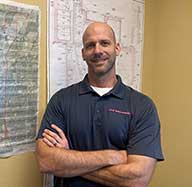
As a Senior Project Manager at SCS, Steve is responsible for overseeing solid waste and environmental services projects from SCS’s Oklahoma City and Wichita offices. He has a broad range of expertise, including solid and hazardous waste regulations, landfill design, and regulatory compliance. Steve supports his clients providing landfill and solid waste solutions that include compliance audits, stormwater modeling and design, remedial action plans, remedial systems designs, site investigations, health and safety assessments, waterway crossing assessments, and construction.
Living and working in the Heartland, his efforts take him to sites including solid waste facilities, active and closed landfill sites, oil well fields, fuel storage facilities, vehicle maintenance facilities, truck stops, industrial sites, and agricultural sites. Chemical contamination encountered in both soil and groundwater media is of growing concern across the nation. Steve mitigates and helps prevent contamination from petroleum, dioxin, herbicides, pesticides, heavy metals, and solvents. Some of these sites have complex management systems that protect the air, water, and soil from harm. Operating these systems in harmony is expensive, requiring experience and understanding of each of the components plus regional knowledge.

Sangeeta Bhattacharjee, E.I.T., an SCS Engineers Associate Professional, submitted Steve’s name as a Waste360 candidate, unknown to him. So being among the honorees came as quite a surprise. Sangeeta told us, “I wanted to let everyone know about his work and take inspiration from him.” She went on to say:
If anyone is looking for a professional who has experience, knowledge, expertise in landfills but who is still so humble, honest, and always there to learn more, it is Steve in my eyes. Anyone who meets Steve will be assured that he will get the work done. That much confidence and expertise with so much coolness is a rare combination. I, and most of my colleagues, depend on his personal qualities every day; I am sure others will be happy to know him.
Steve, a graduate of Kansas State University, is licensed in Kansas, Missouri, Nebraska, and Oklahoma. He is a member of the National Society of Professional Engineers, the Kansas and Oklahoma Societies of Professional Engineers, where he served in several chair positions as well as Chapter President; and the Solid Waste Association of North America where he recently served in the Sunflower Chapter as a Director.
Thanks to Sangeeta, Steve and all the Waste360 40-Under-40 Award Winners for their commitment to solving solid waste industry challenges and facing these challenges positively − you make a difference.
The staff at SCS Engineers (SCS) has talked at length about how changing the parameters of a coal ash remediation project impacts the eventual outcome of that project. That involves not only the factors present at a particular site but also the regulatory environment in which that site operates, certainly as rules evolve regarding the disposal of coal combustion residuals (CCRs).
Two primary means of coal ash remediation are closure-in-place, or cap-in-place, of an existing coal ash storage site, and closure-by-removal. Closure-in-place involves dewatering the storage site, or impoundment, in effect converting from wet storage to dry storage of ash. A cover system is then used to prevent more water from entering the site.
Closure-by-removal involves dewatering of the coal ash, and then excavating it, and transporting it to a lined landfill or a recycling center.
“There are lots of technical reasons and site-specific factors that can influence a project’s outcome,” said Eric Nelson, vice president of SCS and an experienced engineer and hydrogeologist. “These might include the type and volume of CCR, the geologic setting [e.g., groundwater separation], presence and proximity of receptors [e.g., drinking water supply], and physical setting [e.g., constraints such as access, available space onsite for re-disposal, proximity/availability of offsite re-disposal airspace, etc.].”
Sherren Clark, an SCS team member with experience in civil engineering and environmental science, said “risk evaluation is a key component of remedy selection. A CCR unit undergoing an assessment of corrective measures [ACM] could be a 100-acre ash impoundment containing 30 feet of fly ash, but it also could be a 2-acre bottom ash pond. It could have numerous groundwater constituents exceeding drinking water standards by a significant margin, or it could have a single parameter slightly above the limit at a single well. And there could be water supply wells nearby in the same aquifer, or none for miles around. All of these factors play into the selection of a remedy that addresses the existing risks, without creating other negative impacts such as site disturbance, dust, or truck traffic.”
Tom Karwoski, a hydrogeologist and project manager for SCS who has designed and managed investigations and remediations at landfills as well as industrial, Superfund, and other waste storage sites, noted the challenges inherent to individual sites and stressed careful planning is needed to achieve the desired result. At some sites, “given the size and the nature of the impoundments, transport of CCR off-site may not be the best option.” When moving from the ACM to the remedy [selection], it’s extremely important to have multiple meetings with the client to set the schedule. Based on the way the [CCR] rule is written, things have to progress logically. There’s time available for careful planning. The last thing we want to do is start making assumptions without input from the client and other interested parties. Regulatory compliance and concern for the surrounding community and the environment are important to us and our clients.
“If the nature of the site in its current condition allows it, capping of the site will reduce surface water moving through the waste and significantly cut down on the risk of groundwater contamination,” Karwoski said. “At sites where you have CCRs that may be distributed across a site, to consolidate that onsite and then the cap will address CCRs impacting groundwater.”
Jennifer Robb, vice president and project director with SCS’s Solid Waste Services Division, and the company’s Groundwater Technical Advisor for the Mid-Atlantic region said her group has “done corrective measures for cobalt, arsenic, and thallium,” all contaminants found in coal ash. “There are some in situ bio-remediation that can be done, where basically you’re trying to alter the chemistry to immobilize the metal.” Jennifer noted that there are also more physical remedies where contaminated groundwater is extracted from the subsurface by pumping or the groundwater plume is contained or treated in-situ with the construction of “cut off trenches.”
Karwoski said, “we have no preconceived notions about what is best for all sites, but if you consolidate [waste] onsite and then cap, it will certainly take care of a lot of situations where you have CCRs impacting downgradient groundwater.” This approach may not be appropriate in every situation, but, if arrived at after thoughtfully navigating the remedy selection process defined in the current Federal CCR rules (40 CFR 257 Subpart D—Standards for the Disposal of Coal Combustion Residuals in Landfills and Surface Impoundments), should result in an approach that is effective based on the site-specific factors present.
Read last month’s blog “Many Factors Influence Remedies for CCR Control and Disposal.”
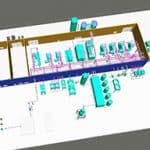 EBJ announced on January 23 that it is honoring SCS Engineers with multiple awards for environmental business achievements, advanced technology, and another for ASP composting project merit. The official awards ceremony takes place during EBJ’s Environmental Industry Summit XVIII in San Diego, California, in March.
EBJ announced on January 23 that it is honoring SCS Engineers with multiple awards for environmental business achievements, advanced technology, and another for ASP composting project merit. The official awards ceremony takes place during EBJ’s Environmental Industry Summit XVIII in San Diego, California, in March.
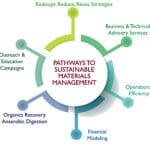
SCS is receiving the Gold Business Achievement Award for a Large Environmental Firm, for outstanding business performance in 2019. We largely attribute our organic growth to our clients interested in Sustainable Materials Management (SMM) and renewable natural gas (RNG) services. Our SMM programs increase our clients’ solid waste management efficiencies, reduce waste, and support sustainable recycling, and our design and design/build facilities convert landfill gas, dairy digester gas, and wastewater treatment plant digester gas to RNG. In addition, SCS’s Geographic & Practice Area Expansion initiative in 2019 enables us to expand our professional engineering and consulting services for liquids management, wastewater treatment, and emerging contaminants from new offices in the South, Central, and Midwest regions of the United States.
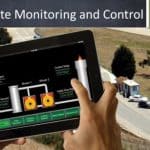 The Information Technology Award for SCS Remote Monitoring and Control® (SCS RMC®) software is especially gratifying. SCS RMC technology helps lower landfill operating costs and maximize gas capture by integrating next-generation supervisory control and data acquisition (SCADA) opportunities such as 3D imaging from drones and virtual reality (VR). Beyond typical SCADA features, our system uses aerial data to compose topographic mapping, 2D images, and 3D renderings. SCS RMC can also incorporate geographic information systems (GIS), thermal, near-infrared, and methane leak detection data. The 3D model in use by San Bernardino County and other clients incorporates a Microsoft HoloLens VR headset that allows executives, facility management, and operators to “walk the site” from their offices, as well as view and control equipment remotely from almost any internet-connected mobile device. The technology integrates with our SCSeTools® platform, in use on over 600 landfills that help facilities continually gauge operational health and spot trends that help determine when and how to invest in infrastructure.
The Information Technology Award for SCS Remote Monitoring and Control® (SCS RMC®) software is especially gratifying. SCS RMC technology helps lower landfill operating costs and maximize gas capture by integrating next-generation supervisory control and data acquisition (SCADA) opportunities such as 3D imaging from drones and virtual reality (VR). Beyond typical SCADA features, our system uses aerial data to compose topographic mapping, 2D images, and 3D renderings. SCS RMC can also incorporate geographic information systems (GIS), thermal, near-infrared, and methane leak detection data. The 3D model in use by San Bernardino County and other clients incorporates a Microsoft HoloLens VR headset that allows executives, facility management, and operators to “walk the site” from their offices, as well as view and control equipment remotely from almost any internet-connected mobile device. The technology integrates with our SCSeTools® platform, in use on over 600 landfills that help facilities continually gauge operational health and spot trends that help determine when and how to invest in infrastructure.
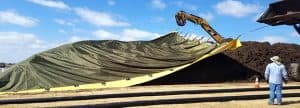
The Environmental Services Division of the city of San Diego, in collaboration with SCS Engineers, is receiving the Composting Project Merit Award in recognition for the composting operation at the Miramar Landfill in San Diego. In collaboration with the City, SCS designed an innovative covered Aerated Static Pile (ASP) composting system that will divert 100,000 tons per year of organic waste from the landfill. The ASP became operational in August 2019 and will compost 40,000 tons per year into useful by-products (and has capacity for an additional 20,000 tons). It provides an enhanced stormwater control system, and will eventually run on renewable energy generated from the landfill. According to the StopWaste.com calculator, the upgrade reduces greenhouse gas emissions by the equivalent of removing 19,015 cars from the road.
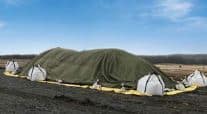
In addition, the recent announcement of SCS’s ASP Composting Pilot Program is making headlines. SCS owns a covered ASP compost system that is mobile and can be set-up on sites within an area of 50 feet by 100 feet, or less. In the covered ASP compost system, process and odor control is pro-active with a shorter composting period. Pilot tests allow waste managers to assess composting and to see if it is the right fit for their situation. The ASP system processes material batches in two months. Additional batches or “recipes” can test in 2-month intervals.
“Managing air, water, and soil pollution prevention are driving state and local regulations,” said Bob Gardner, a Senior Vice President of SCS Engineers. “Offsetting as much of the cost by improving operations, lowering energy consumption, and switching to renewable energy resources is critical to our clients.”
About SCS Engineers
 SCS, an employee-owned environmental consulting and construction firm, is celebrating our 50th year in business. We are producing technologies and programs that lower industrial operating costs and reduce greenhouse gases for private and public clients who are establishing goals to reduce their environmental impact.
SCS, an employee-owned environmental consulting and construction firm, is celebrating our 50th year in business. We are producing technologies and programs that lower industrial operating costs and reduce greenhouse gases for private and public clients who are establishing goals to reduce their environmental impact.
Our technologies and programs are finding footholds in the agricultural, industrial, and manufacturing sectors as municipalities and companies aim to reach climate change goals without passing all of the expense to consumers. SCS clients entrust us with the management of more than 35 million metric tons of anthropogenic CO2e greenhouse gases every year. We collect and beneficially use or destroy enough to offset greenhouse gas emissions from 7.4 million passenger cars annually.